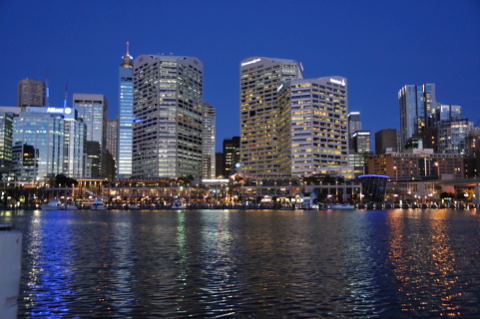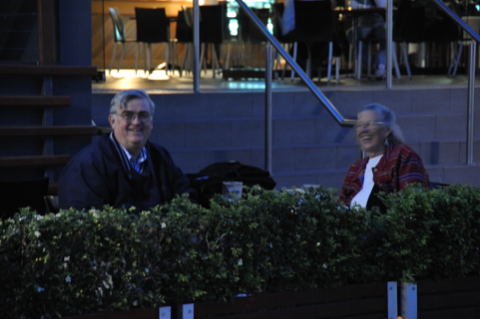During hard economic times and travel hampered by security concerns, it is tempting to try to keep abreast of one's field reading proceedings instead of attending the conferences themselves. However, you then miss two important opportunities.
The first is getting valuable feedback on your research. There is nothing more efficient than presenting your work in a daring and controversial way, because you incite the audience to challenge it. You might be sitting in your cave for years brooding on your problem, chasing down the solution on a wrong path, but at a conference after a 15 minute presentation you may get tips from those that worked on the problem before, and also invaluable feedback on fallacious thought patterns.
The second is serendipity: you may sit on a lawn in front of the conference venue and somebody might strike a conversation with you on a problem you are secretly starting to work on and give you a key lead.
Serendipity may be a passive recreation as the sign suggests, but concomitantly it can also be very potent. I think this is what the sign's author had in mind.
On a Wednesday evening, when the AIC is in session, Sydney Harbour, or more precisely Darling Harbour, may be a good place to be.
Carefully camouflaged in a garden restaurant you may find John and Mary McCann, and they will get you up to speed on the latest research on colour appearance for high dynamic range (HDR) imaging.
And while you join them sitting at their table, on the pier in front of you, you may spot Prof. Jinsook Lee, who heads the newly formed AIC Study Group on Colour Naming.
Thinking of it, boarding that vessel for a tour of the harbour may be a good idea.
In fact, I end up sharing a table with Maud Hårleman, who had presented an interesting paper on Thinking of colour with and without colour words the previous Monday and Anders Nilsson of the Färginstitutet.
Turns out Anders just released two weeks ago a new Web tool called NCS Navigator that allows you to explore NCS with a concomitant 3-dimensional view and a 2-dimensional projection. We had an interesting discussion on the suitability of various programming languages for implementing colour tools.
On my side of the table were Paul Green-Armytage and Harald Arnkil.
With Paul I had a long discussion about research on colour naming. For his dissertation he embarked to solve the same colour naming problem Nathan Moroney had, but he took a top-down approach instead of Nathan's bottom-up approach. After years of research, it is invaluable to be able to compare the two research approaches.
With Harald I had a discussion on Nathan's paper research he blogged yesterday. Turns out a colleague of his has worked on it for years and he was able to give me invaluable pointers.
In all, it has been a very productive evening.










No comments:
Post a Comment